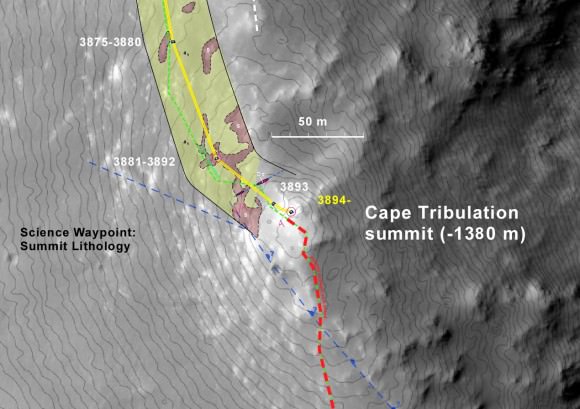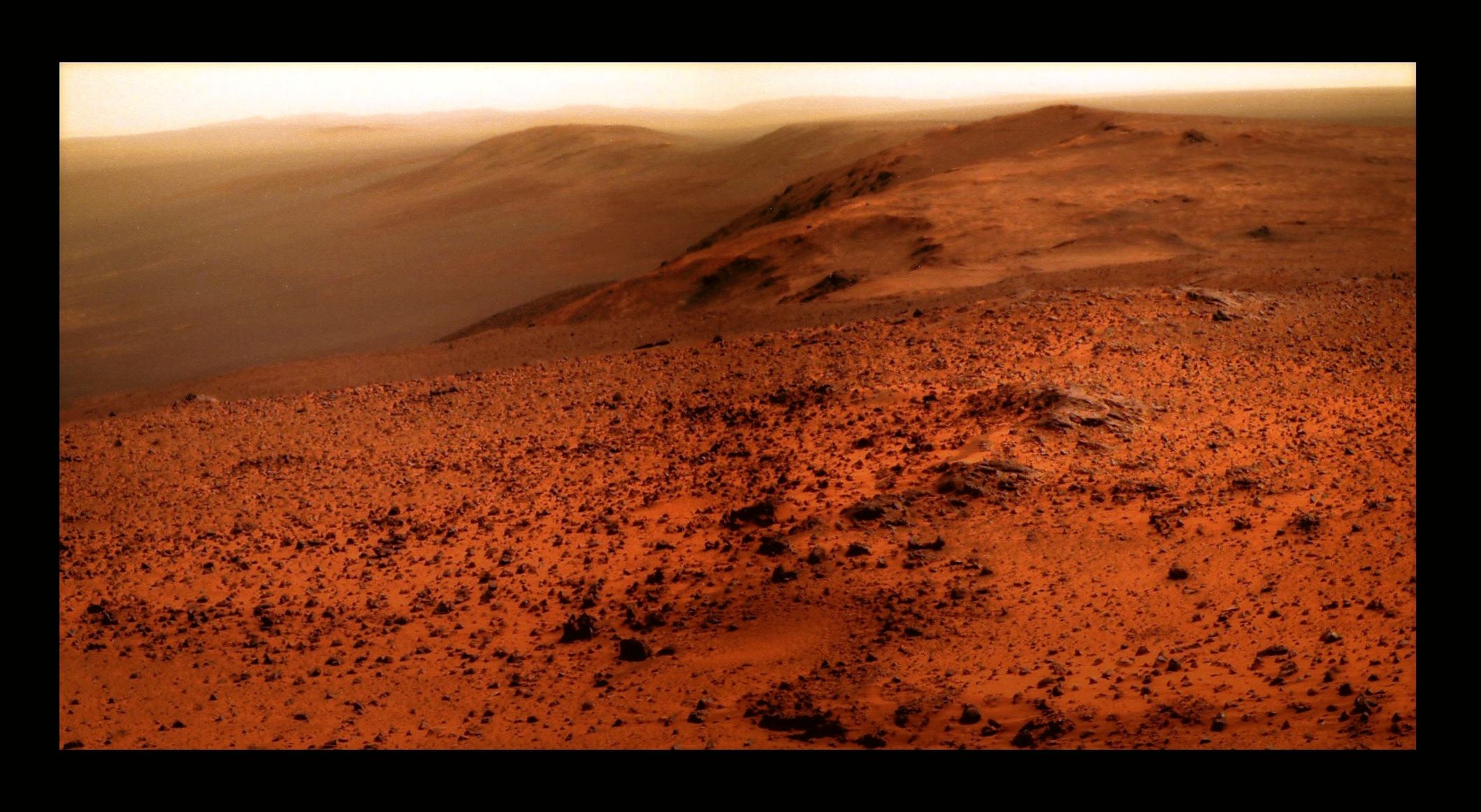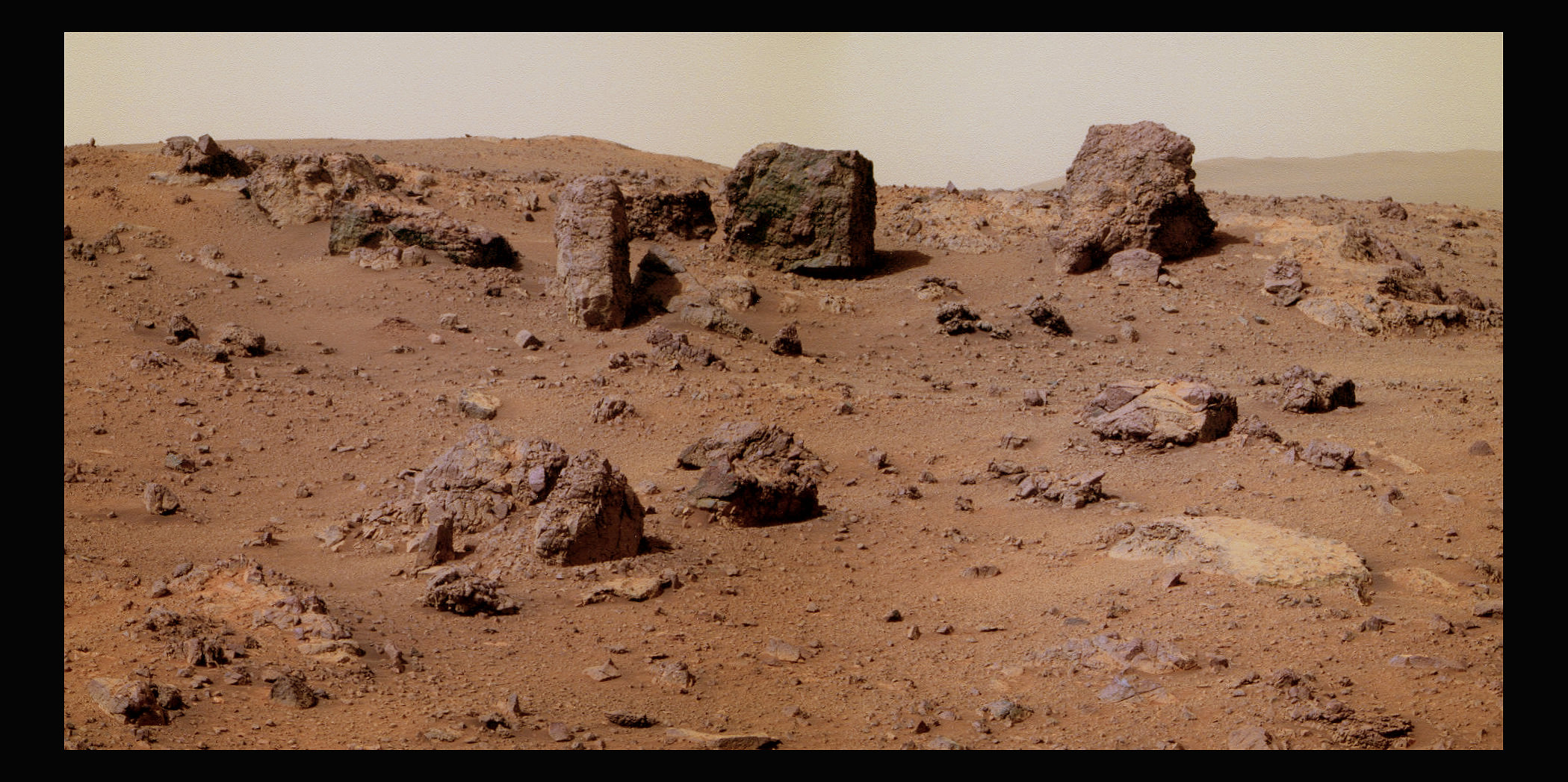Imagine if you were standing on Mars, beside the Opportunity rover, high on the summit of Cape Tribulation. You don’t have to leave too much to the imagination, thanks to imaging enthusiast Stu Atkinson. He’s put together a magnificent colorized version of Oppy’s recent panoramic view, atop the highest elevation that the rover will ever reach, perched on the west rim of Endeavour crater.
Click the image for the full view.
It’s quite the spectacular view for the rover that keeps going and going, with over 11 years of trekking across Mars. You can see haze and hills off in the distance, and a horizon that continues to beckon. According to Larry Crumpler from the MER science team, if you look closely at the image — from Oppy’s viewpoint — you can see all the way to the other side of the crater.
“We can see the rim looking north along the path to this location, and we can see far to the south, including another large impact crater that lies 10 km or so south of Endeavour,” Crumpler wrote in the rover field reports published on the New Mexico Museum of Natural History & Science’s website.
Here’s a map created by Crumpler of the Opportunity rover’s location at Cape Tribulation:

And here’s the black and white panorama from Arizona State Univerity:

Stu wrote poetically about the image on his website, explaining that the rover is looking down from the summit of Cape Tribulation, “with gorgeous views of the rim of Endeavour on the farside of the crater and of her tracks leading back down the hill to the great Merdiani Plain far below.”
Stu also explained his motivation for the work he does in enhancing the raw images sent from Mars:
What I try to create with my images is a vision of Mars, something that puts across – hopefully – the beauty of the planet and its landscapes. So my images are not photo-realistic, and I don’t claim them to be, but they, I hope, one person’s depiction of Mars which reflect the planet’s incredible raw beauty and nobility.
We only hope Stu, that like the rover, you keep going and going with your image processing wizardry too!
For more information on the Opportunity rover, you can see the following links for Opportunity raw images, its latest mission status, a location map.


